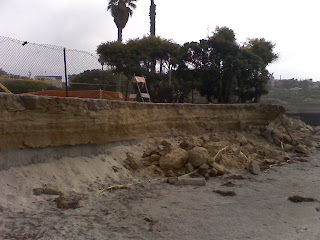Here is a photograph of a span-of-control illustration, from an impromptu discussion about organizational change in real estate development…
We are often asked about change—questions like ‘how can my organization change to accomplish your recommendations?’ or ‘why don’t developers do it this way or that way?’
Narrow Span of Functional and Process Control
Though the details of the reasoning can be complex, there is one high-level concept that is important and easy to understand. It is management’s span of control over organizational functions //fn1//. In real estate, management’s functional span of control is in most cases narrow—in other words, many processes and decisions that determine outcomes are not in direct control of management. For example, to a greater degree than in a typical industry, these real estate industry functions are often influenced from outside the organization: entitlement, equity investment, debt investment, design, production, marketing, sales, and service are some possible examples. Larger developers often contain more functional departments in house, but many residential and commercial developers are medium and smaller organizations with considerably functional outsourcing. And even with larger organizations, key process timelines and requirements--such as entitlement, equity investment, and debt—come with significant uncertainty and rigidity that precludes change. Moreover, large developers often have challenges with change because of regionalization (responding to the 'local' nature of the development industry) as well as chain of command issues.
The photograph shows ten rocks in two pyramids. Think of the rocks as organizational functions or processes. The narrow pyramid in the center is a real estate development organization in which only a few functions and processes are directly controlled, or inside the pyramid (the three rocks). Contrast this with a typical organization, represented by the larger pyramid, in which a larger number of functions and processes are directly controlled (all ten rocks).
Because they experience substantial uncertainty and reduced control, developers both resist change, which can be seen as adding risk, and they also have relative difficulty accomplishing change because they cannot directly control it.
Disciplines Required and Systemic Change
Accomplishing change in real estate development requires familiarity with development organizations and industry processes. To these, we must apply the disciplines of process redesign and organizational change, and integrate them with a solid understanding of strategic and tactical change objectives for the organization, and knowledge of the real estate market.
Often, real estate industry change requires working with not just the development organization, but also other industry organizations with which the developer interacts--the change must occur process-wide and inter-organizationally. This span-of-control perspective is particularly important with urban betterment initiatives such as Smart Growth, New Urbanism, green building, and socially responsible investment--because by their nature their objectives often target systemic change.
* * * *
What change do you wish to accomplish? How many affected functions and processes do you control, internally and externally? How do you best proceed?
---------------------------
//fn1// I hope to be clear that 'functional span of control' is distinct from 'management span of control.' Management span of control is an employee's authority and responsibility over subordinates, generally described in job descriptions and organizational charts. With 'management's functional span of control, I refer to management's authority and responsibility over functions and processes utilized in production. Important here is that in real estate, many processes and functions required for end-product production are external, or interorganizational, to a greater degree than normal. This reduced control has implications regarding what is produced, and how what is produced might be changed.



























